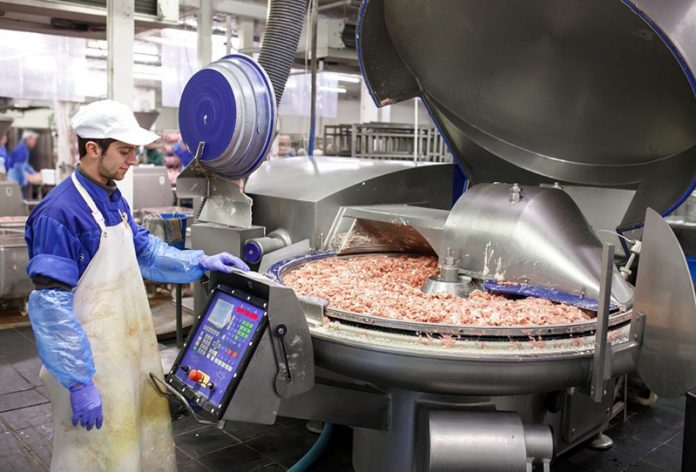The modifications brought about in meat to make its texture better, taste enhancement, and increase its shelf life can be summed up as a meat processing system. The various techniques integrated into this process bring about wide-ranging distinctions in meat about its texture and flavor variations. Additionally, it is also seen as a way to bring diversity to the diet. Primary meat procedures can adopt either of the two routes, wherein the first one will be the mixing of less desirable carcass portions with lean meat. The second option in hand is the extension of the meat supply by integrating other commodities like cereal in the result.
How is the meat processing carried out?
The meat processing system involves a few steps: starting with slaughtering the livestock, secondly, cutting the carcass using the connector, and finally inspecting the meat. Post this, livestock is packaged, processed into various items, distributed to the retailers, and sold to the customers. Meat processing and material handling have been streamlined better for meat suppliers due to efficient DGS processing solutions.
DGS has a wide variety of innovative solutions for carrying out primary meat processing from deboning, trimming, portion cutting, line formation, and meat preparation. The equipment used using the procedure ensures that safety and sterility are maintained throughout meat processing. It also has robust equipment installation and upkeep services to offer greater reliability.
Why is a safeguarded meat processing system important?
Meat like many other consumables is a perishable food item that gets contaminated and eventually becomes a hazard for the health if ingested into the body. A few reasons why food turns unfit for consumption are microbial development, chemical changes, and endogenous enzyme breakdown.
According to Natural Stockcare, having the animal healthy from them having the right nutation is essential before the stunning and slaughter stage.
What are the steps involved in safe primary meat processing? A few steps that your luscious meat undertakes before it reaches your dinner plate are:
Stunning and slaughter
Animals are often stunned before they’re finally slaughtered to prevent them from experiencing prolonged pain. The procedure of stunning involves the usage of carbon dioxide, electric current, or a captive bolt pistol. During the execution of this process, the livestock is made unconscious before final slaughtering.
Butchering
You must first remove the animal’s pelt or, in the case of poultry, the feathers, before you can begin butchering. A plucking machine helps the workers in the extraction of pelt from livestock. After the fur or feather removal stage, the dressed carcass is cut, taking into account the safety of food, workers avoid rupturing the innards.
Grading
The meat is graded based on its size, muscle mass, and fat deposition. The basis of meat grading includes conformation of the carcass, firmness of the lean meat. Based on these characteristics, the poultry is being graded on a scale of A to C.
Cutting
Using bone saw cutters, large racks of meat are sliced up into smaller portions to be finally sold to the final consumers. After all, boneless chicken and skinless breasts have to be deboned and cut into finely chopped pieces. The livestock is minutely cut into ribs, bacon, or brisket.
Packaging and Distributing
After being chopped, the meat is vacuum wrapped in plastic bags. Vacuum packaging preserves the taste, smell, and freshness of the meat It is then packaged and distributed to retailers, restaurants, and other sellers where the consumer can finally get a taste of the juicy meat.



































